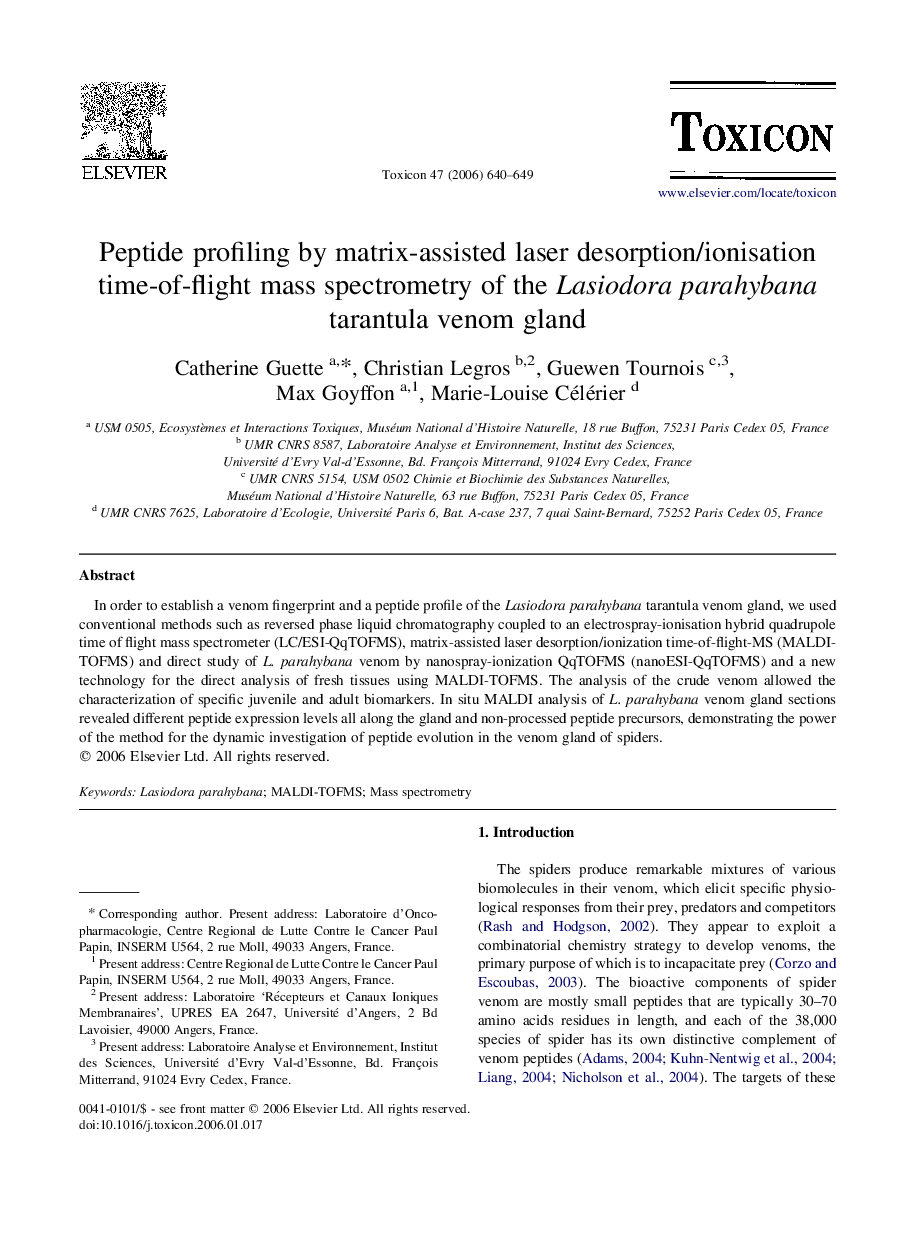| Article ID | Journal | Published Year | Pages | File Type |
|---|---|---|---|---|
| 2066290 | Toxicon | 2006 | 10 Pages |
In order to establish a venom fingerprint and a peptide profile of the Lasiodora parahybana tarantula venom gland, we used conventional methods such as reversed phase liquid chromatography coupled to an electrospray-ionisation hybrid quadrupole time of flight mass spectrometer (LC/ESI-QqTOFMS), matrix-assisted laser desorption/ionization time-of-flight-MS (MALDI-TOFMS) and direct study of L. parahybana venom by nanospray-ionization QqTOFMS (nanoESI-QqTOFMS) and a new technology for the direct analysis of fresh tissues using MALDI-TOFMS. The analysis of the crude venom allowed the characterization of specific juvenile and adult biomarkers. In situ MALDI analysis of L. parahybana venom gland sections revealed different peptide expression levels all along the gland and non-processed peptide precursors, demonstrating the power of the method for the dynamic investigation of peptide evolution in the venom gland of spiders.
